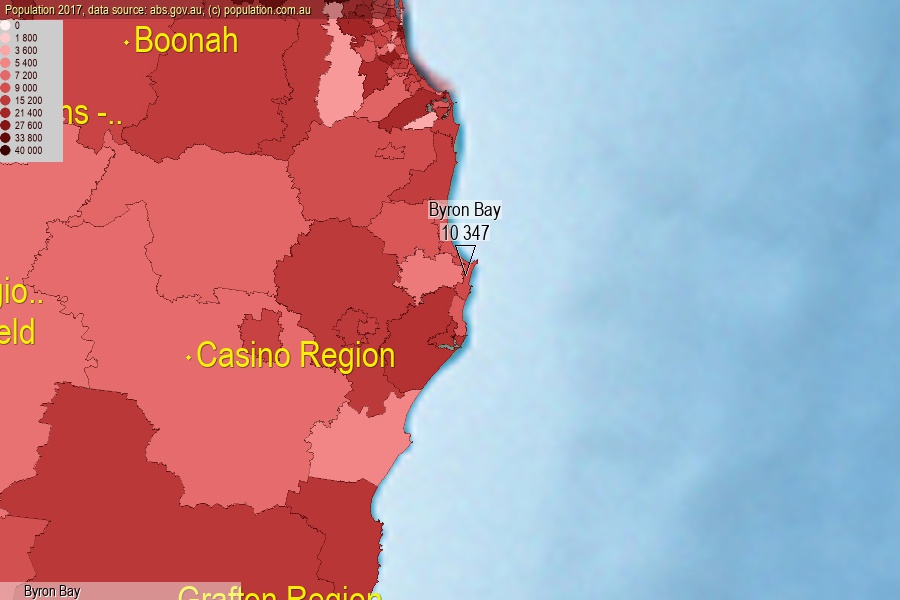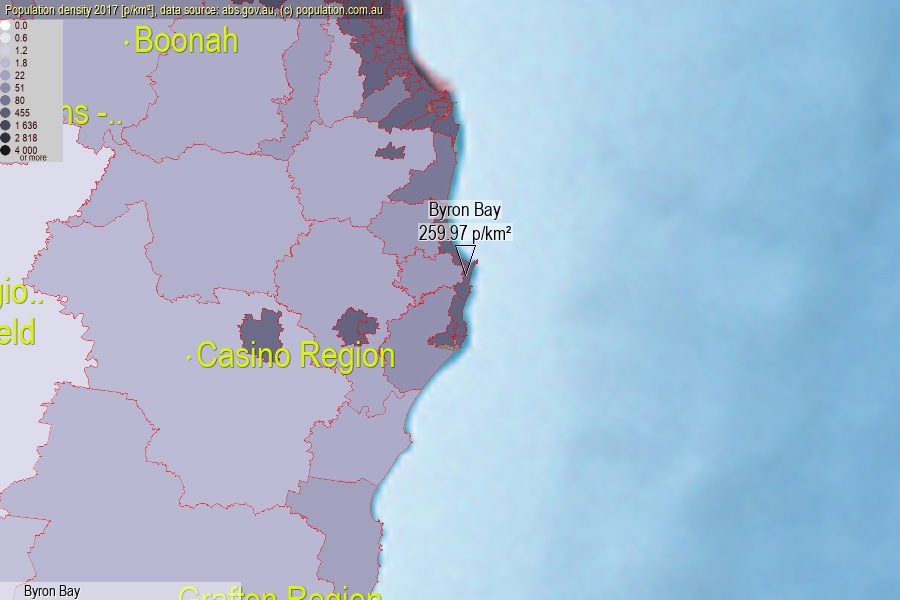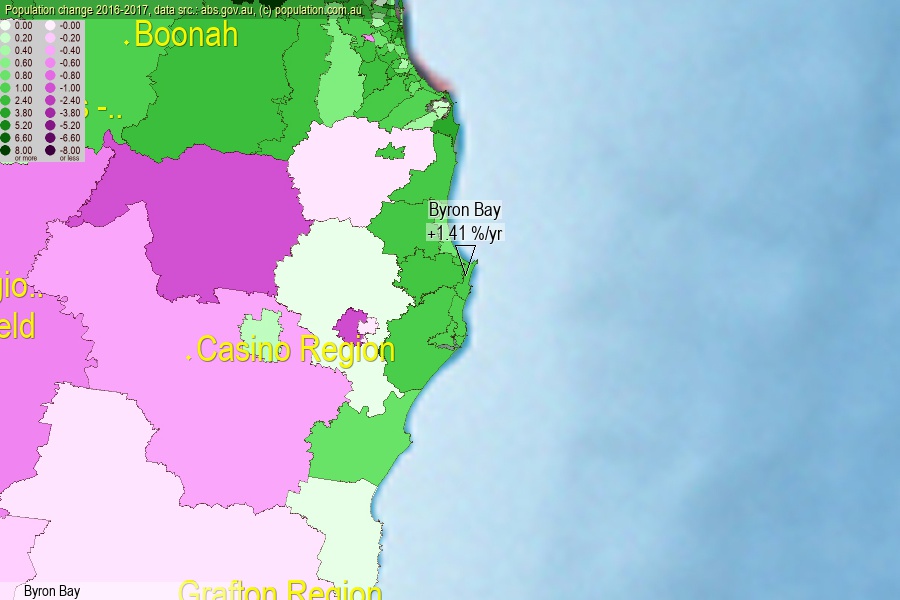 population.com.au
population.com.auLast official estimated population of Byron Bay (as Statistical Area Level 2) was 10 347 people (on 2017-06-30)[2]. This was 0.04% of total Australian population and 0.13% of NSW population. Area of Byron Bay is 39.80 km², in this year population density was 259.97 p/km² . If population growth rate would be same as in period 2016-2017 (+1.41%/yr), Byron Bay population in 2025 would be 11 575. [0]



Click to enlarge. Byron Bay is located in the center of the images.
Population [people], population density [p./km²] and population change [%/year] [2]
View borders » (new window) [4]
[1991-1992] +2.17 %/Yr.
[1992-1993] +1.53 %/Yr.
[1993-1994] +7.25 %/Yr.
[1994-1995] +5.85 %/Yr.
[1995-1996] +2.67 %/Yr.
[1996-1997] +4.60 %/Yr.
[1997-1998] +5.77 %/Yr.
[1998-1999] +2.99 %/Yr.
[1999-2000] +1.61 %/Yr.
[2000-2001] +3.28 %/Yr.
[2001-2002] +0.08 %/Yr.
[2002-2003] +0.37 %/Yr.
[2003-2004] -0.80 %/Yr.
[2004-2005] -1.15 %/Yr.
[2005-2006] -1.65 %/Yr.
[2006-2007] -0.10 %/Yr.
[2007-2008] +0.58 %/Yr.
[2008-2009] +0.47 %/Yr.
[2009-2010] +0.85 %/Yr.
[2010-2011] +1.28 %/Yr.
[2011-2012] +2.37 %/Yr.
[2012-2013] +2.46 %/Yr.
[2013-2014] +1.68 %/Yr.
[2014-2015] +1.68 %/Yr.
[2015-2016] +1.85 %/Yr.
[2016-2017] +1.41 %/Yr.
[0] Calculated with linear interpolation from officially estimated population
[1] Read more about SA2 and Australian Statistical Geography Standard (ASGS) on abs.gov.au
[2] Population data from Australian Bureau of Statistics (Population and density: 2017; change: 2016-2017)
[3] Digital Boundaries: Australian Statistical Geography Standard (ASGS) 2016.
[4] Border coordinates are simplifyed using Ramer-Douglas-Peucker algorithm.